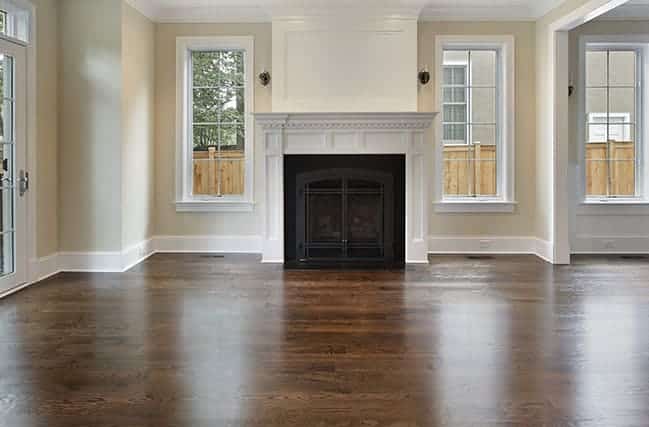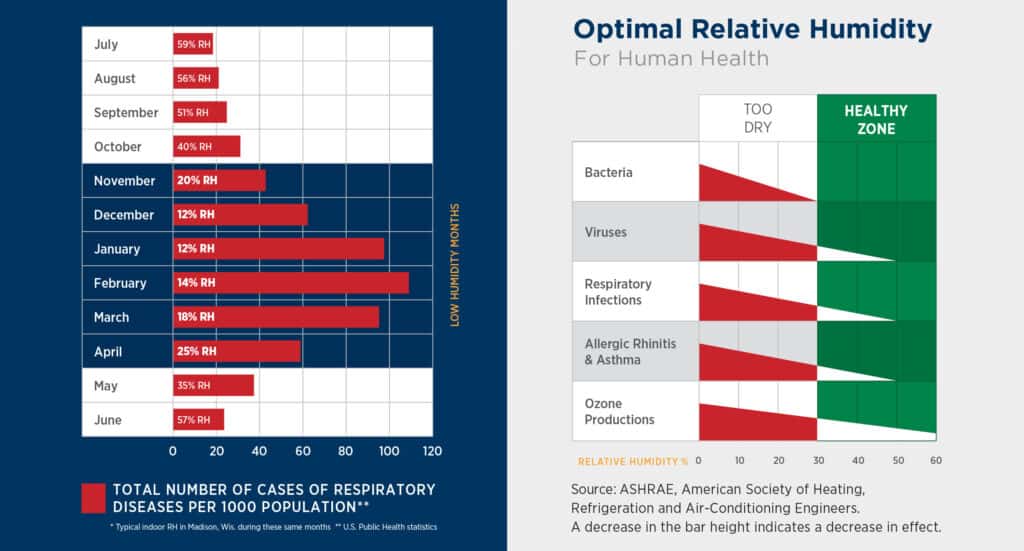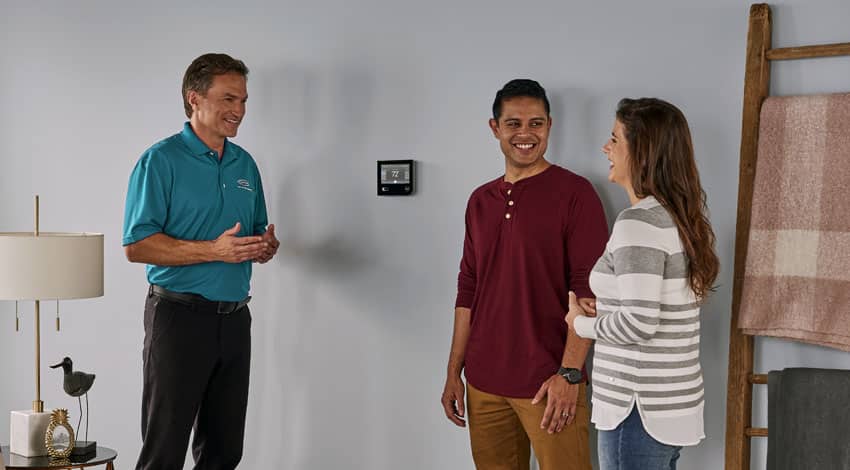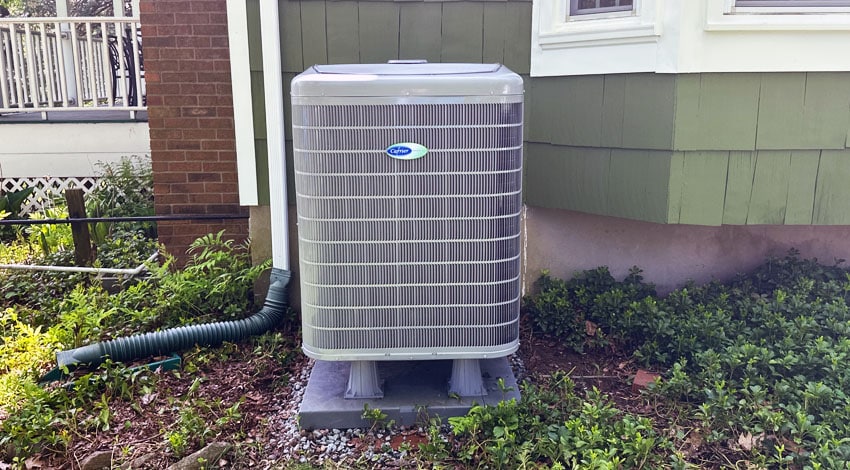
Winter is right around the corner, and with winter comes snow and cold weather that will have you turning up the heat and enjoying nice evenings by the fire. Did you ever think about how these living conditions and changing humidity levels inside your home can affect your beautiful new hardwood floor?
Your hardwood floor is made of… wood! And wood is a natural material that reacts to changes in its environment even after it has been transformed into flooring. Yes, manufacturers have developed different types of hardwood floor constructions to “improve and control” the wood’s natural reaction to changes in humidity. But keeping humidity at the recommended level is still essential for keeping your hardwood floor looking great, as well as for a healthy home environment.

PROPER HUMIDITY LEVELS
Proper humidity level for your health
The United States Environmental Protection Agency (EPA) lists indoor air quality among its top environmental health threats. There are three key components to healthy air: it must be fresh, clean, and have the proper humidity level.
The ideal relative humidity for your health and comfort is about 40-50%.
- During winter: It may need to be between 30-40% to prevent condensation on your windows and other surfaces. Relative humidity settings that are too low may cause respiratory infections, allergic rhinitis, and asthma.
- During summer: It can move up to 50-55%. Relative humidity that is too high may have health effects due to mold growth, dust mite infestations, as well as certain bacteria and viruses.
Proper humidity level for your hardwood floor
The National Wood Floor Association (NWFA) states that normal relative humidity levels should range between 30%-50% to ensure successful long-term performance of your wood flooring.
DRY SEASON
Your hardwood floor during the dry season
During the winter, when homes are heated and the air is dry, wood flooring loses some of its moisture and contracts or shrinks as a result.
Hardwood flooring dryness problems:
- Gapping
It is normal that when relative humidity is lower than recommended, wood plank shrinks, therefore thin gaps can appear between wood planks. Even if the right term to use is gaps, these small gaps between the wood planks can sometimes be called cracks or spaces between wood planks by consumers. Having gaps between your wood planks is normal, and a homeowner should be prepared for it to occur. Once humidity levels rise again, the hardwood floor will expand and most gaps will close up again. - Splits & Checks
When the wood is faced with extreme conditions, it can be stressed beyond its limitations. Therefore the wood weakens, making your hardwood floor more brittle and increasing the likelihood of damage or splintering. The boards themselves may split, check or crack in the centre or at the ends, or both, along the grain, damaging the finish. This damage is permanent, because your hardwood floor finish is cracked—your wood is no longer protected.
Preventing dryness problems
- Maintain a proper humidity level in your home by using a humidifier during the winter months.
- Be aware that wood stoves and electric heat tend to create very dry conditions, so make sure to use your humidifier when these are on.
- If you are a “snowbird” and leave your home unoccupied for weeks at a time, make sure to always keep temperature and relative humidity at recommended level.
HUMID SEASON
Your hardwood floor during the Humid Season
During warm and humid summers, your hardwood floor will absorb moisture from the air, swelling and expanding as a result. This expansion can create pressure between the boards, which can cause the boards to warp, cup or crack. Both cupping and crowning are natural reactions to moisture and should not be of concern if they occur only to a minor extent. More severe cases, however, indicate a serious moisture problem.
Hardwood floor moisture problems:
- Cupping:
When a wood plank cups, its edges become higher than its centre. This is a reaction due to a humidity level disproportion in the wood plank. There can be numerous causes to cupping, including an excessive level of relative humidity, relative humidity migrating from a basement or crawl space, water infiltration, etc. - Crowning:
Crowning is the opposite of cupping. The middle of the board is higher than the board’s edges. This can occur when the surface of the floor encounters moisture. It most often occurs when a floor has been sanded too soon after cupping.
- Buckling:
Buckling is one of the most extreme reactions to moisture that can occur with hardwood flooring. It happens when the floor expands beyond expansion gaps and literally pulls away from the subfloor, as high as several inches. Once the humidity drops, the floor may shrink back, but it is possible that you may see spaces between the wood boards. - Cracking:
When extensive moisture or humidity causes the wood to expand significantly, adjoining boards start pressing against each other. In extreme cases, this increased pressure can cause the affected boards to lose their structural integrity and crack.
Preventing moisture problems:
- Make sure you leave free expansion space around the perimeter of your floor when installed. For aesthetic purposes, they are usually covered with baseboards.
- Maintain proper humidity levels with an air conditioner, dehumidifier or by turning on your heating system periodically during the summer months.
- If you go away on a long summer vacation, leave the A/C on.
- Avoid excessive exposure to water from tracking during periods of inclement weather.
- Clean your hardwood floor with a cloth lightly dampened with a recommended hardwood floor cleaning product.
- Choose a good quality engineered hardwood floor that will fit with your needs.




